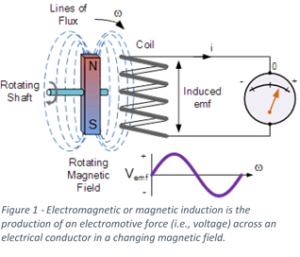Electro Magnetic Induction vs Hall Effect – Choosing the correct DFT gauge
All DFT gauges are not created equal, that is why when comparing different instruments from different suppliers it is always a good exercise to check that you are comparing apples with apples; and that where possible, you are comparing similar technologies. Making sure that the coating thickness gauge that you have is using the same technology as other gauges from other manufacturers, is key to choosing the right instrument. Digital Coating thickness gauges use different methods of measuring a coating, so it’s imperative that when making a decision as to which unit you are wanting to buy that you are comparing like with like. There are 2 key technologies that are used in modern DFT gauges Electro Magnetic Induction and Hall Effect. The three main users of the Electro Magnetic Induction (EMI) or Ferro Magnetic technique are Elcometer, Fischer and Electro Physik. To the best of our knowledge other manufacturers use Hall Effect (HE) for at least the majority of their probe alternatives.
 |
Electro Magnetic Induction (EMI)
Electro Magnetic Induction or Ferro Magnetic induction was used in the first coating thickness gauge which was designed in 1947. The advantage of this method of measurement is that it can accurately be used on smooth as well as rough or blasted surfaces. Instead of having to compensate for the profile thickness you can accurately calibrate the gauge on the profiled substrate using a thin and thick foil to make sure that you measure the coating thickness above the peaks which is ultimately what the intention of the coating is. This would also ensure that you comply with ISO19840 which specifies this. Because of the more advanced intricacies of designing and manufacturing this type of gauge it does mean that there is a higher cost of manufacture. |
 |
Hall Effect (HE) Hall Effect is used as a method of measuring coating on metal ferrous substrates. It was originally designed for only measuring thicknesses on smooth substrates such as in the automotive or powder coating industry. The principal of measurement is easier and cheaper for manufacturers which is why most manufacturers worldwide use this method. The gauges that use Hall Effect need to use an offset to compensate for a rough or blasted substrate. This offset is usually an estimate of the blasted profile so the coating thickness result using a Hall Effect gauge is dependent on the accuracy of measuring the blast profile. In many scenarios the actual blast profile is an unknown and needs to be approximated. In summary using a Hall Effect gauge, which worldwide are used by most manufacturers, is highly dependent on the accuracy of the offset, resulting in the accuracy of the coating thickness reading being relatively variable. |
Conclusion
If your application is on a smooth substrate then the accuracy should not be compromised when using the Hall Effect (HE), but on a rough surface there is an element of estimating for a DFT gauge that uses the Hall Effect (HE) which will affect the accuracy. If accuracy and repeatability are an important consideration, then it would make sense to consider a gauge that uses Electro Magnetic Induction. The three main manufacturers using the Electro Magnetic Induction or Ferro Magnetic technique are Elcometer, Fischer and Electro Physik. Other manufacturers as far as we are aware use Hall Effect.

